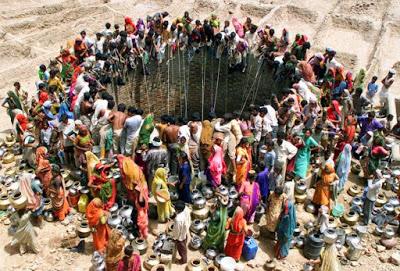 The following is excerpted from an investment web site that focuses on sustainability. One of its portfolios is devoted to water and all its "connective tissue," including acquisition, purification, transportation, and consumption. Why is water a good investment? Because it's scarce and getting scarcer. Why?
The following is excerpted from an investment web site that focuses on sustainability. One of its portfolios is devoted to water and all its "connective tissue," including acquisition, purification, transportation, and consumption. Why is water a good investment? Because it's scarce and getting scarcer. Why?Population growth. Within the past century, the world population has tripled from 1.8 billion in 1900 to over 6 billion in 2000, and in slightly more than 10 years, we have added another billion, reaching the 7 billion mark in October 2011. Although growth rates have begun to level off, the world’s population is expected to reach 9 billion people by 2050.
Changing consumption patterns. Historically, there has been a positive correlation between disposable income and meat consumption. The global middle class is expected to grow from about 1.8 billion people today to 4.8 billion people by 2030. A larger middle class – most of which will be located in the emerging markets – will consume more meat. Producing one calorie equivalent of meat requires 10x more water than producing one calorie equivalent of corn or wheat.
Increasing industrial production will require higher volumes of high quality water, adapted to the industrial application where it is needed. Many of the recently built or upgraded industrial production plants are located in water-stressed emerging markets.
Climate change will have a significant impact on the distribution of precipitation and the availability of water. For instance, in India, Pakistan, China and other Asian countries, about 1 billion people rely on run-off from the Himalayas as their main water source. As a result of global warming, glaciers that supply most of the freshwater to the region during the dry season are expected to deliver up to 50 % less water within the next few decades. In addition, rising sea levels and floods will have a dramatic impact on coastal fresh water sources, causing them to become brackish or salty.
_________________________________
Founded in 1995, RobecoSAM is an investment specialist focused exclusively on Sustainability Investing.

